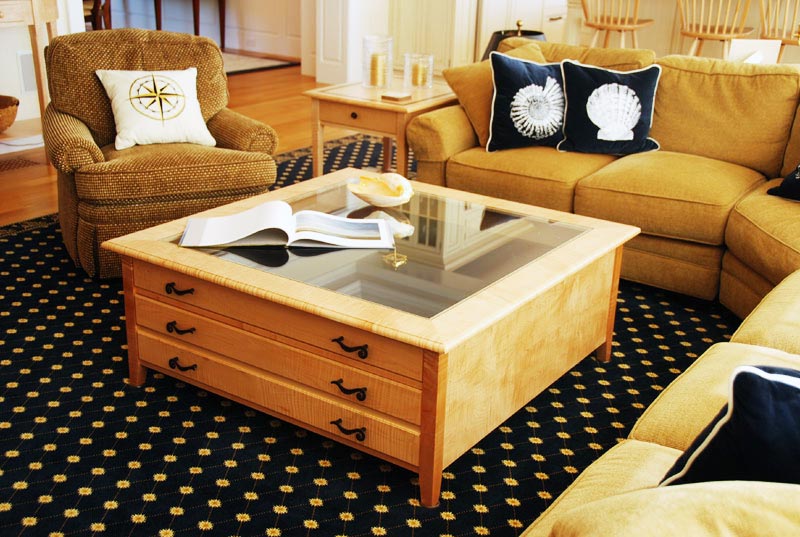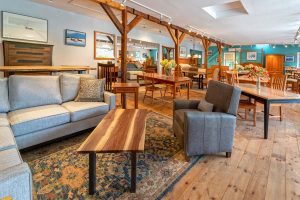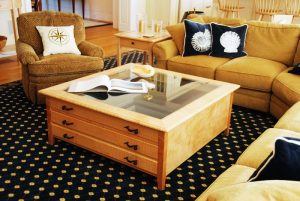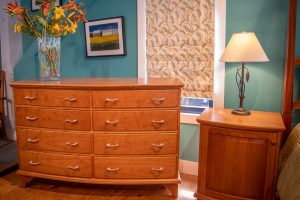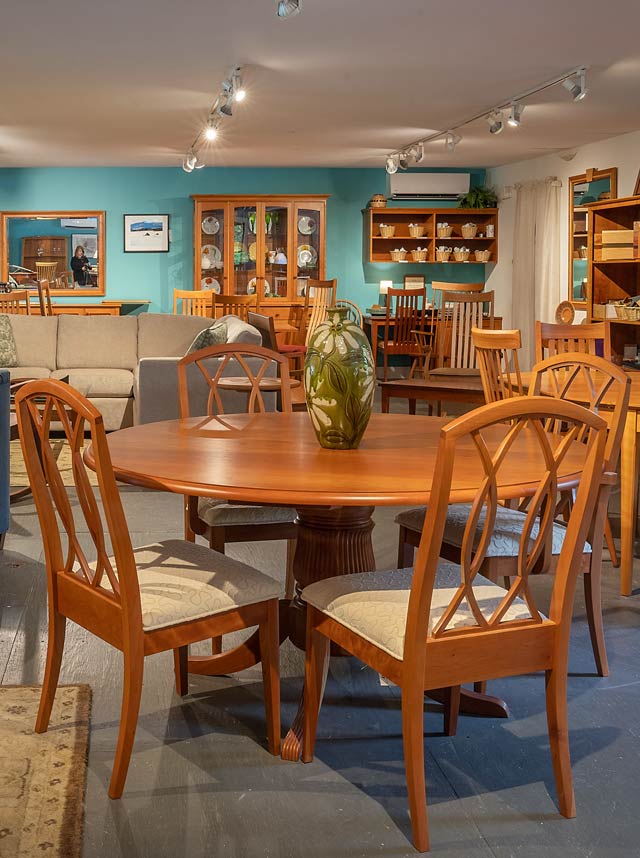When you shop for a new car or major appliance, you do your homework first. You
research brands to check out their reputation for reliability and quality. And you walk into
the showroom with the knowledge you need to make a smart decision.
Buying hardwood furniture is no different. Not all pieces are made the same — literally.
There are shortcuts that could turn your expensive piece into a yard sale cast-off.
Wobbly legs, warped tops, and sticky drawers are just a few problems that can be
avoided when you choose wisely. So here are 12 things to look for when shopping for
wood furniture.
1. Wood finish
The first thing you see on hardwood furniture is, of course, the wood itself. The finish
makes all the difference here. A smooth, lasting finish requires time. Ask about the
finishing process. Was this piece hand-rubbed in a multi-step process? What product
was used? Is it harmful to the environment? Is the finish water-resistant? Will it withstand
spills like coffee, acidic citrus juices, and red wine? What will you need to do to keep the
piece looking brand new?
2. Solid wood
Wood represents a broad range of quality, colors, and grains. Hardwood — like maple
walnut, and cherry — is preferred over softer woods — like pine and spruce — for the
durability and exquisite appearance. The word “solid” doesn’t guarantee exceptional
quality. In some cases, the furniture is made entirely of wood, making it “solid”; however,
everything but the exterior could be a lesser quality wood. Compressed wood, particle
board, and veneers can all qualify as “wood”. If you’re not sure, ask! If there are veneers,
ask how they are manufactured and applied because a veneer can come apart from the
piece if not properly constructed.
3. Joinery methods
Checking out how the wood parts have been joined is like looking into a crystal ball. If
you see staples and excess globs of glue, I’m seeing a short life. Dovetailing and mortise
and tenon joints are the two best ways to build in strength.
A dovetail joint is made by joining two pieces of wood together across their width and at
right angles to each other. The angular design of this technique — even without adding
glue or screws — makes it virtually impossible to separate the joints. Also, these
distinctive “tails” are aesthetically pleasing.
A mortise and tenon (also known as “tongue and groove”) adds strength and
demonstrates exceptional craftsmanship. The tenon is a wood extension that fits into a
deep groove, called a mortise, on the connecting piece. The joint is glued or pinned in
place.
4. Drawer guides
One of the fastest ways to determine the quality of wood furniture is to open and close
the drawers. How easily do they glide? Is there a built-in “stop” so that the drawer closes
effortlessly? Is it mounted straight? A drawer guide is like the engine of a car. They
range from “putt-putt” to “vroooom”. A quality guide is costly because it is necessary to
extend the life of the piece. Be sure to ask about the warranty on the hardware because
this is a good indicator for the life of the piece.
5. Drawer Construction
The dovetail joinery is particularly valuable with drawers because opening and closing
them puts strain on the joint. Without dovetailing, the front of the drawer could easily
loosen or come apart altogether.
Next. run your hand along the interior of the drawer. The wood should be smooth,
preferably made from the same material as the exterior. A rough surface, even slightly
so, indicates the craftsman was rushing through the project. And if there is a shortcut
here, there are likely many more.
6. Back Panel
Even though the back of your hardwood furniture is not likely to show, the care that is
taken to craft the piece shows on every plane. The back panel provides support for the
piece and should be carefully affixed to do the job correctly. Look for nails and screws.
The presence of staples on the back panel is another of those dreaded shortcuts!
7. Corner Blocking
A corner block is a simple step in the furniture construction process. The craftsman
adds small wooden blocks glued in corners to enhance the strength and ensure that
the piece remains square. It takes time, however, so a company can save time and
money by skipping this step. And the money you save will cost you in the durability of
your piece. Extensive corner blocks are a sign of superior craftsmanship.
8. Table Top
A beautiful table in the showroom can become unsightly at home if you don’t know what
you’re buying. Bonded pieces can warp or separate, if not constructed properly. Rub
your hand along the top to ensure it is perfectly smooth. Check the leaves to be sure that
they fit easily and well, and that the leaves’ grain blends with the tabletop. Look at the
engineering of the hardware. Does it glide easily? Is the metal strong enough to support
the table top? The corners should be reinforced with blocks and the legs should be
secure. Give it a push and a tug to check for wobbling.
9. Chair Legs and Joints
A wobbly chair is an unsafe chair. Turn the chair upside down to see how well it was
crafted. Are the legs and joints sturdy? Has the craftsman used mortise and tenon
joinery? Do you see dried glue seeping from the joints? Look for additional corner blocks
reinforced with screws. Make sure the slats and rungs don’t wobble when you pull on
then.
10. Level and Alignment
A wobbly chair is an unsafe chair. Turn the chair upside down to see how well it was
crafted. Are the legs and joints sturdy? Has the craftsman used mortise and tenon
joinery? Do you see dried glue seeping from the joints? Look for additional corner blocks
reinforced with screws. Make sure the slats and rungs don’t wobble when you pull on
then.
11. Hardware
Hardware can be another cost-cutter. Don’t be swayed by the beauty of the wood. Look
at the door pulls, handles, and hinges. Are they good quality? Have they been adhered
properly? Are they straight? Test the drawer guides and table glides.
12. Shelf supports
A bookcase or hutch in a showroom is usually bearing little weight. Think about what
you’ll put there in “real life”. Are the shelves designed to safely support heavy dishes or
books? Are the pins inserted into brass grommets instead of raw wood to reduce wear?
Look for center supports on longer shelves and check the construction to ensure that
you’re not risking a catastrophic collapse!
Remember, furniture is an investment. Think about the life you want from each piece of
furniture before purchasing. A great piece becomes an heirloom. The lesser pieces are
destined for yard sale clearance.

